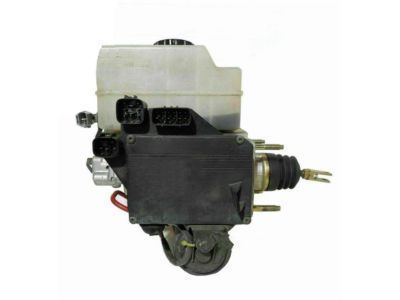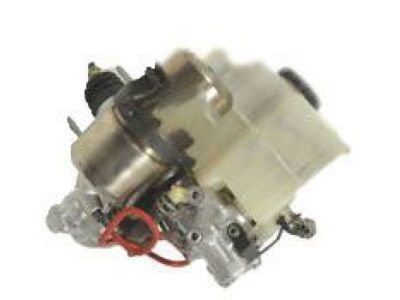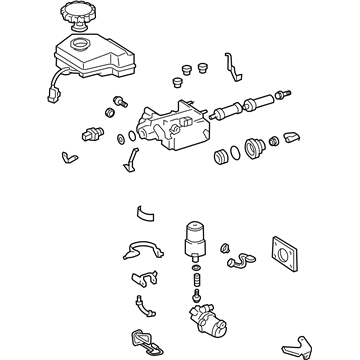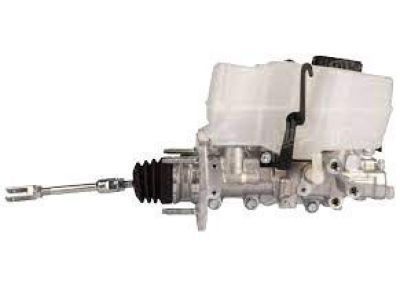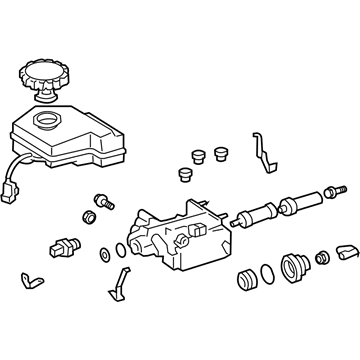×
ToyotaParts- Hello
- Login or Register
- Quick Links
- Live Chat
- Track Order
- Parts Availability
- RMA
- Help Center
- Contact Us
- Shop for
- Toyota Parts
- Scion Parts
My Garage
My Account
Cart
OEM 2003 Toyota 4Runner Brake Master Cylinder
- Select Vehicle by Model
- Select Vehicle by VIN
Select Vehicle by Model
orMake
Model
Year
Select Vehicle by VIN
For the most accurate results, select vehicle by your VIN (Vehicle Identification Number).
2 Brake Master Cylinders found

2003 Toyota 4Runner Brake Booster Assembly, W/Master Cylinder
Part Number: 47050-60010$1358.81 MSRP: $1991.35You Save: $632.54 (32%)Ships in 1-3 Business DaysProduct Specifications- Other Name: Cylinder Assembly, Brake; ABS Pump And Motor Assembly; Brake Master Cylinder; ABS Control Module
- Replaces: 47210-60010
- Part Name Code: 47210L
- Item Weight: 28.60 Pounds
- Item Dimensions: 17.5 x 15.1 x 13.6 inches
- Condition: New
- Fitment Type: Direct Replacement
- SKU: 47050-60010
- Warranty: This genuine part is guaranteed by Toyota's factory warranty.

2003 Toyota 4Runner Cylinder Sub-Assembly, Brake Master
Part Number: 47025-60081$1205.93 MSRP: $1767.30You Save: $561.37 (32%)Ships in 1-2 Business DaysProduct Specifications- Other Name: Cylinder Sub-Assembly, Brake Stroke Simulator; Brake Master Cylinder; Brake Reservoir
- Replaces: 47025-60080
- Part Name Code: 47201
- Item Weight: 17.30 Pounds
- Item Dimensions: 9.0 x 7.2 x 6.0 inches
- Condition: New
- Fitment Type: Direct Replacement
- SKU: 47025-60081
- Warranty: This genuine part is guaranteed by Toyota's factory warranty.
2003 Toyota 4Runner Brake Master Cylinder
Looking for affordable OEM 2003 Toyota 4Runner Brake Master Cylinder? Explore our comprehensive catalogue of genuine 2003 Toyota 4Runner Brake Master Cylinder. All our parts are covered by the manufacturer's warranty. Plus, our straightforward return policy and speedy delivery service ensure an unparalleled shopping experience. We look forward to your visit!
2003 Toyota 4Runner Brake Master Cylinder Parts Q&A
- Q: How to Perform a Complete Overhaul and Reinstallation of the Brake Master Cylinder and Brake Booster with Accumulator Pump Assembly on 2003 Toyota 4Runner?A: Start your work only after flipping the ignition switch to OFF and pressing the brake pedal more than 40 times since high pressures on brake actuator tube No.1 should not cause deforming. Seize all spilled brake fluid and swiftly clean painted surfaces which these fluids have touched. To access the work area you need to take off the instrument panel finish plate followed by the instrument panel finish panel sub-assy lower together with instrument panel lower LH and skid control ECU assy and push rod pin by unfastening its clip. The procedure begins by disconnecting 5 connectors from the brake master cylinder followed by using Special Service Tool: 09023-00100 to detach the 4 brake lines while keeping proper notes for their future reconnection. The procedure requires unfastening four nuts to ease outward extraction of the brake master cylinder while removing the brake booster gasket. Use Special Service Tool: 09630-00014 (09631-00142), 09950-60010 (09951-00180, 09951-00190) to securely fix the brake master cylinder onto a vise before freeing its lock nuts followed by removing the rod operating adapter to extract the master cylinder push rod clevis and boot. Start the brake master cylinder reservoir sub-assy removal by disconnecting the brake level warning connector then unscrew its 3 screws. You should detach the 3 reservoir grommets and then remove the brake master cylinder reservoir filler cap assy. The installation of the brake master cylinder kit requires use of a screwdriver to press on the plug before using a pin to push out the snap ring and carefully pulling out the brake booster piston and brake booster plug alongside the master cylinder piston which should move straight out to protect the cylinder bore. Location 1 and 4 and Position 3 brake actuator brackets, along with Position 1 brake actuator tube using Special Service Tool: 09023-00100 need removal before taking out the brake actuator hose and accompanying clips. Remove the brake control wire by disassembling 4 screws and the clamp and extract the oil pressure sensor and both spacer and O-ring. First remove the brackets (No.3 and No.2) for the brake booster pump and next remove the brake booster accumulator pump assembly with bracket (No.1). After that remove both the washers and three bushes and two collars. Checklists indicate how to remove the brake booster accumulator assy using Special Service Tool: 09318-12010 while keeping contaminants away from the pump. Operation of the brake booster pump assy can be checked by applying battery power leads. Dispose of the brake booster accumulator assy by using a saw to cut it slowly while targeting only the specified area. Fasten the brake booster pump assembly by following the installation guidelines for the brake booster accumulator pipe and compression spring along with new O-ring while using Special Service Tool: 09318-12010 to tighten the assembled brake booster accumulator assembly with 54 Nm (551 kgf-cm, 40 ft. lbs.) torque. Begin assembly by installing brake actuator bracket No.3 with 7.8 Nm (80 kgf-cm, 69 inch lbs.), immediately followed by brake booster pump bracket No.2 with the same torque setting and finishing with drive assembly of the shaft, collars, bushes and washers for brake booster pump bracket No.1. After installing the brake master cylinder the brake booster w/accumulator pump assy should be installed followed by installing brake booster pump bracket No.2 and No.3 at 11.8 Nm (120 kgf-cm, 9 ft. lbs.). Use a thickness gauge to modify the brake booster bracket clearance until it reaches the specified measurement standards. Insert the oil pressure sensor along with fresh O-ring material and space while tightening with 74.7 Nm (761 kgf-cm, 55 ft. lbs). The brake control wire must receive four screws to secure its position on brake booster pump bracket No.2 through a new clamp. The brake actuator tube No.1 should be installed through the Special Service Tool: 09023-00100 using 15.2 Nm (155 kgf-cm, 11 ft. lbs.) torque. Repair technicians should install brake actuator bracket Number 4 and 1 with a torque limit set to 7.8 Nm (80 kgf-cm, 69 inch lbs.). The installation of the master cylinder piston requires lithium soap base glycol grease as well as brake booster piston and brake booster plug. A snap ring must be accompanied by these components during installation. Users must first apply grease to the master cylinder reservoir grommets before installing the brake master cylinder reservoir filler caps as well as the reservoir sub-assy at 1.7 Nm (17 kgf-cm, 15 inch lbs.). First apply new brake booster gasket to the master cylinder push rod clevis and lock nut before torquing them to 25.5 Nm (260 kgf-cm, 19 ft. lbs.). The brake master cylinder installation requires 4 nuts torqued to 14.2 Nm (145 kgf-cm, 10 ft. lbs.) while using Special Service Tool: 09023-00100 for attaching the 4 brake lines at 15.2 Nm (155 kgf-cm, 11 ft. lbs.). Finally, secure all 5 connectors and reinstall the push rod pin with clip. After installing the push rod pin with its clip you should add the skid control ECU assembly followed by the instrument panel lower LH piece then the instrument panel finish panel sub-assy lower and finish with the instrument panel finish plate. Before filling the reservoir with fluid you must bleed the brake line followed by tests for brake pedal height and pedal free play and reserve distance checks then fluid level and leakage checks before testing the brake master cylinder.
